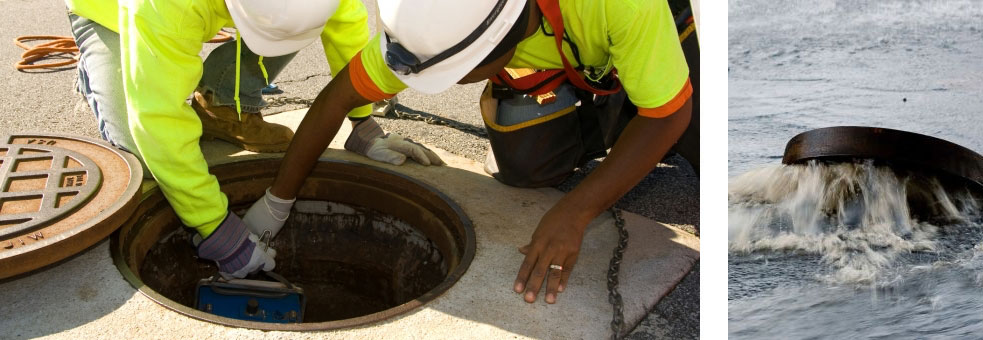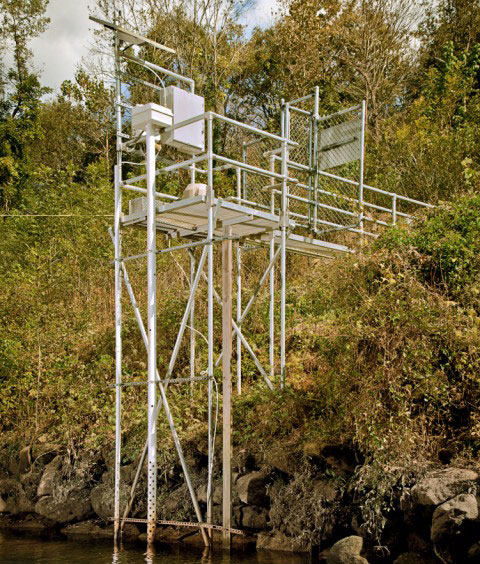REGULATORY COMPLIANCE
It goes without saying that compliance with Environmental Protection Agency (EPA) regulations requires time and resources. More importantly, when a municipality is noncompliant, it can be very costly and time consuming, ultimately resulting in public doubt. Woolpert combines best practices with an in-depth knowledge of regulatory requirements to guide your municipality through the compliance process, avoid penalties and maintain your citizens’ confidence.
Capacity Assurance, Management, Operations and Maintenance (CMOM) Programs
When sanitary sewer overflows (SSOs) significantly impact your water quality and represent a potential threat to human health and safety, EPA mandates require you to employ a holistic, systematic approach via a CMOM program.Through a best management practices (BMP) approach to developing a CMOM program, not only can you meet EPA mandates, but you also increase levels of service, enhance efficiencies, provide cost savings and secure user rates. To successfully implement a program of this magnitude, you’ll need a consultant to assist with your program planning, staff training and community outreach.

Woolpert collaborates with operations and maintenance (O&M) staff to develop valuable, practical and actionable plans that incorporate training, public awareness and stakeholder buy-in. We develop an integrated wastewater and stormwater plan to establish capital improvement and O&M priorities that maximize benefits and resources. Through this integrated approach, we also consolidate and optimize various datasets to improve accessibility and utilization. Woolpert helps municipalities and CMOM program stewards achieve compliance, protect public health and water quality, and establish lasting benefits to the community through the proper use, operation and maintenance of the sanitary sewer system.
National Pollutant Discharge Elimination System (NPDES)
- With its recognition of stormwater runoff as a significant cause of impairment to water quality across the U.S., the EPA is placing new mandates for stormwater monitoring on all NPDES permits. Often, municipalities lack the funding required to meet these new mandates; however, the issue of funding can be compounded by the discovery of a specific requirement that wasn’t met by the given deadline.
Woolpert’s experience with both large and small NPDES programs enables us to understand the nuances of these mandates. With a proven process for conducting audits to identify potential issues before the EPA determines noncompliance, we help you avoid costly fines. And by working closely with your staff who have day-to-day control over NPDES permit implementation, we gain a better understanding of program implementation related to compliance with the permit.

Executive/Administrative Orders
Beyond programs such as NDPES and CMOM, the EPA issues Administrative Orders on Consent (AOC) that require tasks such as removal, feasibility studies and remedial investigation and design. Owners and managers are not only concerned about the remaining useful life of assets, they are also concerned about the legal and financial implications of not meeting AOC requirements. Woolpert takes a truly integrated approach to meeting AOC requirements, bringing together asset management, IT, field condition assessment, regulatory compliance and engineering professionals, to name a few.

When we implement an asset management system, we bring in our engineering staff to ensure we are leveraging best practices. And when our engineers are helping to create a capital improvement or rehabilitation plan, we include our IT professionals to incorporate innovative technologies that calculate risk scores for assets and help prioritize rehab and replacement (R&R) strategies. Woolpert’s integration augments program value and helps you avoid fines and legal action.
Depending on your compliance needs, Woolpert will employ a variety of the following strategies to produce high-quality, innovative and cost-saving solutions:
-
- Improve utility performance through our organizational performance assessments and advanced asset management technologies and tools
- Reduce water loss through leak detection surveys, condition assessments and subsurface utility engineering (SUE)
- Increase water supply options through reuse and conservation strategies, modeling, innovative design, retrofits and rainwater harvesting
- Reduce wastewater treatment volume and costs through implementation of combined sewer overflow (CSO) and SSO abatement strategies (inflow and infiltration reduction), sanitary sewer evaluation surveys (SSES), alternative water sources, green infrastructure and flow monitoring
-
- Evaluate and mitigate the effects of urbanization on water quantity and quality through stormwater program development and implementation, hydrologic and hydraulic modeling, hazard mitigation planning, water quality monitoring and low-impact design (LID)
- Comply with regulatory requirements related to NPDES, CMOM, total daily maximum loads (TMDL), Clean Water Act, executive orders and energy independence and security act (EISA)
- Meet reduced budgets through prioritizing R&R, helping to secure funding and rate optimization
- Become sustainable by evaluating the social, economic and financial impacts of your infrastructure programs and applying the different strategies enumerated above to balance today’s regulatory issues with tomorrow’s long-term planning